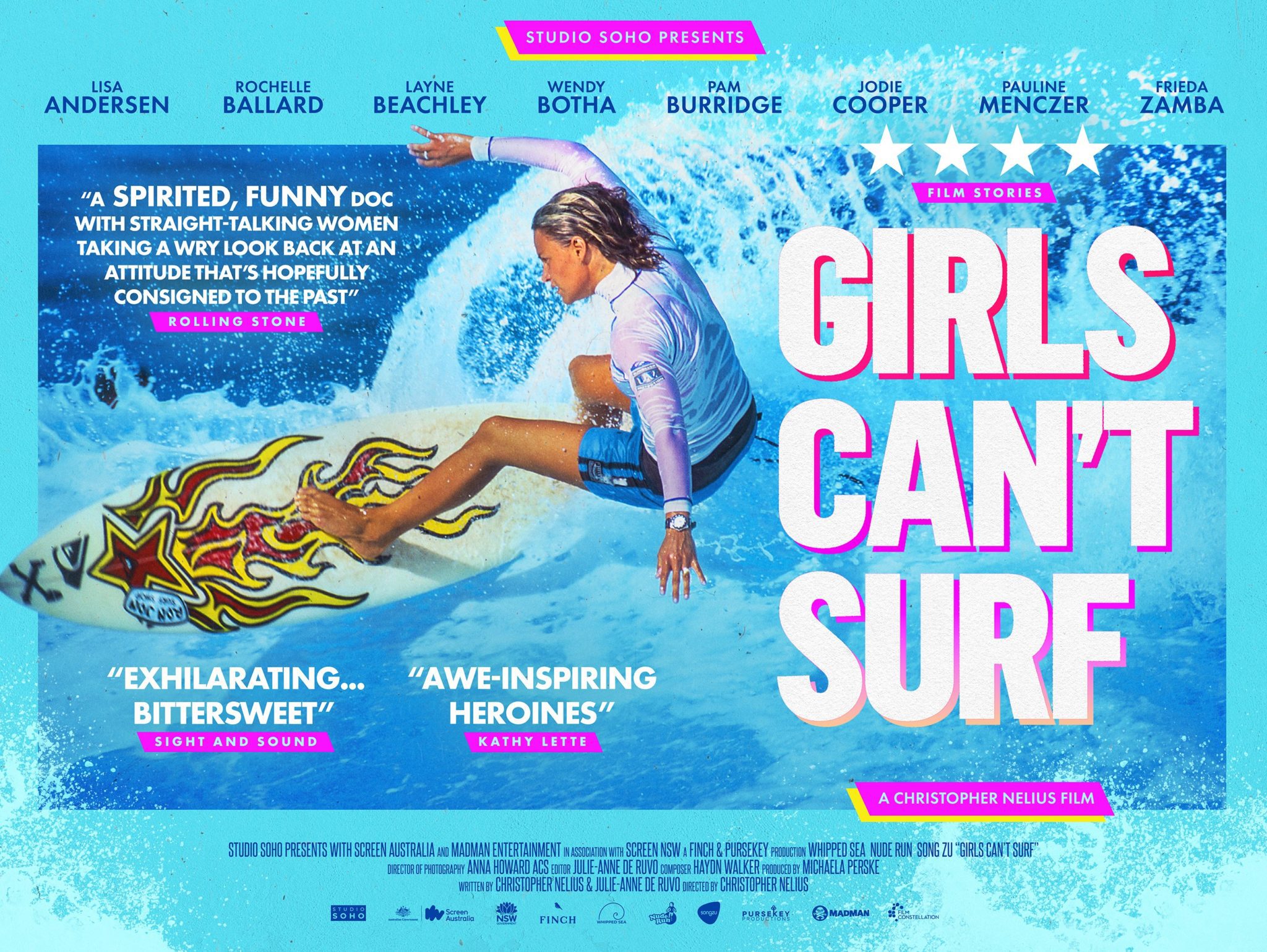The world of professional surfing in the 1980s and 1990s was dominated by men. A brilliant new film called Girls Can’t Surf - produced and directed by Christopher Nelius along with Michaela Perske and Julie Anne De Ruvo - shares the untold story of the gritty women who challenged the industry to achieve gender equality.
As the best male surfers were beginning to make decent sponsorship and prize money income from surfing, Australians Jodie Cooper, Pam Burridge and Layne Beachley, South African Wendy Botha, and Americans Frieda Zamba, Lisa Andersen and Jorga and Jolene Smith took on the blatant sexism in the field. They laid the foundations for the female professionals of the future, leading to the equal pay for men and women introduced by the World Surf League in 2019.
American Jorja Smith describes the 1980s as a disheartening time when, “the men were surfing the best waves, while women were left with this shitty, hell-hole, scum pit of the ocean.” A key moment occurred in 1989 when a female official of the Huntington Beach OP Pro in California decided to drop the women’s event to provide more prize money to the top 30 male surfers... but to keep the bikini contest! Jorja and her twin Jolene led a protest, and thankfully the women’s event was re-instated.
Girls Can’t Surf also explores a number of other undercurrent stories such as family strife, anorexia, alcohol abuse, and teenage pregnancy. In the 1980s, many young gay surfers were ostracised by other surfers on the contest circuit, while others were hated because their looks led them to sponsorships and modelling jobs. Four times world champion Wendy Botha, known for her fearless approach in big waves, opted to pose nude for Playboy magazine in order to raise enough cash to continue her surfing career.
One of the great unsung heroes featured in the film is 1993 world champion Pauline Menczer. She grew up as one of few women in the line-up around Bondi, Sydney, and could not land a sponsorship deal because she didn’t fit the surf industry’s image of a ‘beach blonde’. She often held raffles to raise money to compete, and even slept outside in board bags at events. On top of this she battled rheumatoid arthritis, and in fear of being open about her sexuality, told fellow surfers that her French girlfriend was her coach. When she finally won a world title, she received no prize money.
A huge breakthrough came later in 1993 when Quicksilver started a dedicated women’s surf wear brand called Roxy. It turned over US$600 million in just four years. The film shifts into this new generation led by Lisa Anderson, Layne Beachley, Rochelle Ballard and Megan Abubo, who were the first female surfers to enjoy lucrative sponsorship deals.
But event slots for women at competitions still remained a sore point. In 1999, at Jeffrey’s Bay in South Africa, the women were sent out to compete in a heat when there were no waves. They refused to paddle out, collectively sitting at the water’s edge. This moment was regarded as another turning point.
Fast track to 2022, and the women now have a fixed stop on the world tour at Pipeline, one of the most challenging waves in the world. Sophia Nimphius, Professor of Human Performance at Edith Cowan University, explains the way “the film highlights how much of the sport’s early focus was on how women looked. Speaking of women surfers in the 1980s, Damien Hardman, former surfing world champion, said, ‘I think they just need to look like women. Look feminine, attractive and dress well.’ Pam Burridge, the world champion in 1990, observes: ‘I got some flack that you girls need to lose weight or else the whole sport would fail.’”
Until very recently, women’s events received half the pay that men’s events attracted. Finally, in 2019, the World Surf League offered equal prize money to women surfers as part of a response to a campaign for equality in all sports and working life. WSL CEO at the time Sophie Goldschmidt said, “This is a huge step forward in our long-planned strategy to elevate women's surfing, and the latest in a series of actions the League has undertaken to showcase our female athletes, from competing on the same quality waves as the men, to better locations, and increased investment and support.”
“The one thing we wanted to pride ourselves on was being a leader in this space," said the WSL’s Jessi Miley-Dyer, still an exceptional surfer and former professional on the tour. “We wanted to be one of the first sports to do this for the women.” The WSL became the first American sports body to deliver pay parity. “Today I feel proud to be a surfer,” said eight times world champion Stephanie Gilmore in response, “proud to be a female surfer. I feel like the momentum in our society to have this conversation is incredible - because it's not just in surfing, or in sport, that women are fighting for equality in the workplace. It's everywhere.”
All these women still surf today, a testament to constantly having to juggle other jobs with their world title campaigns. When director Christopher Nelius was asked about the response from the women in the film, he replied, “They were nervous, and I think with good reason, because before this film came along, none of this was on screen, so they just weren't ready for it. But I think they've been really grateful to sort of have their story told from their point of view, and for younger people to, hopefully, be inspired by it.”
women's only sessions
Take a look at our women's only sessions here. Check out our first Sister Session on 9th October.
